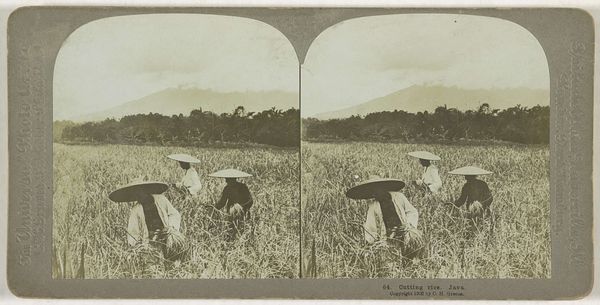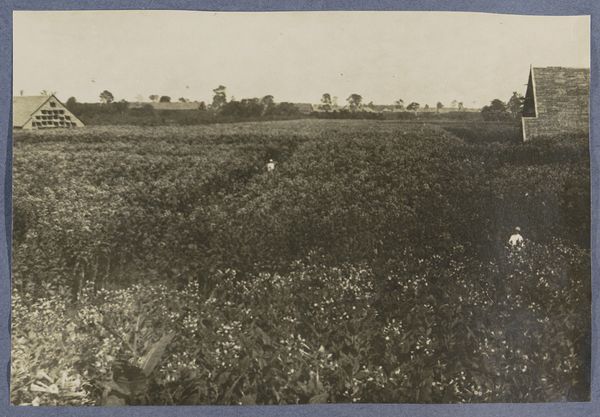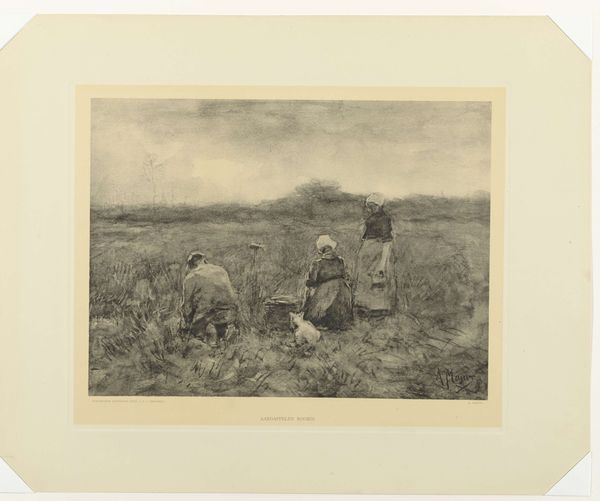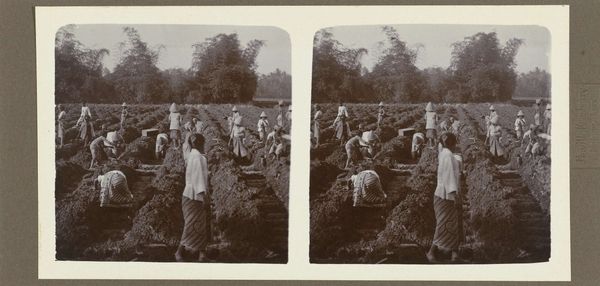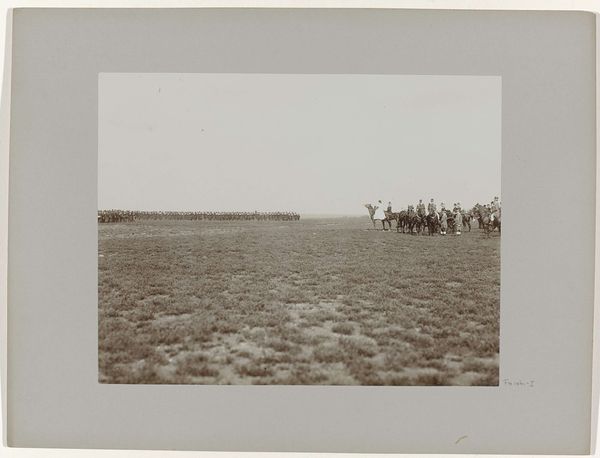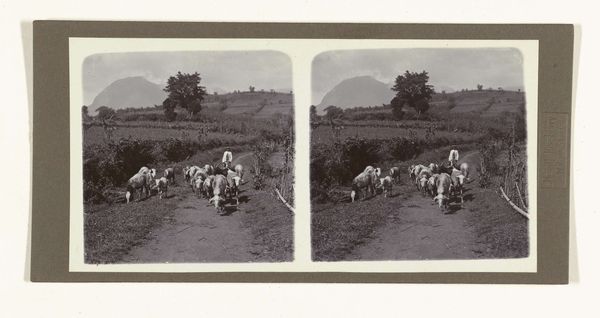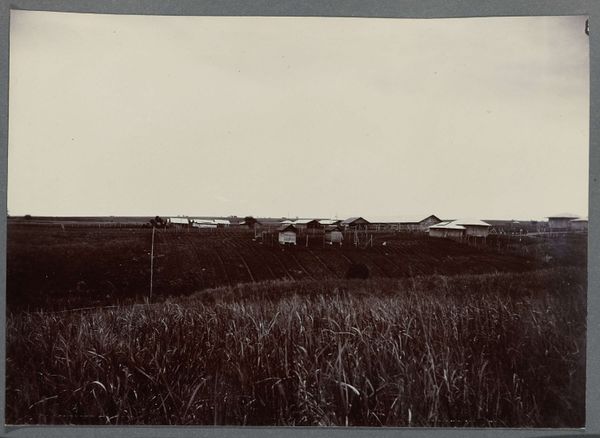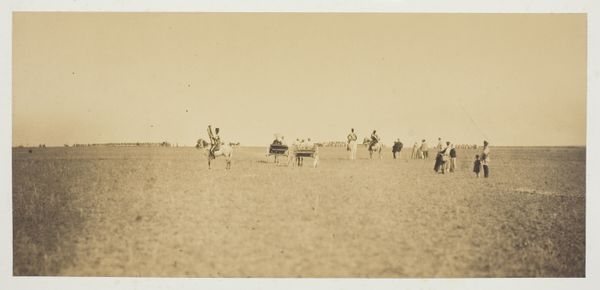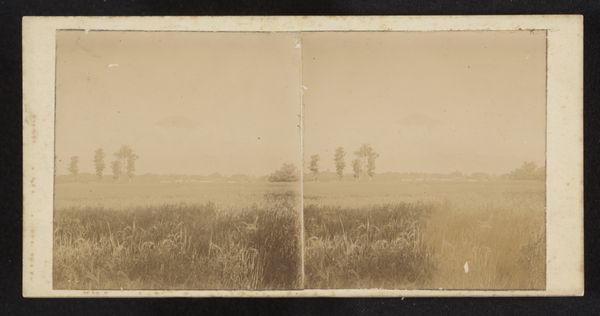
print, photography, gelatin-silver-print
# print
#
asian-art
#
landscape
#
photography
#
group-portraits
#
gelatin-silver-print
#
realism
Dimensions: height 76 mm, width 152 mm
Copyright: Rijks Museum: Open Domain
Curator: This gelatin silver print, titled "Slametan ter ere van het gewas," offers a fascinating glimpse into early 20th-century Javanese agricultural practices. Neville Keasberry, the photographer, likely captured this scene between 1900 and 1935 in or around Malang, Java. Editor: It’s immediately striking how the stark light emphasizes the receding line of workers against the rice paddy. The overall tonality is quite muted; a serene greyscale palette. Curator: The repetition of figures carrying what appears to be harvested rice certainly conveys the collaborative nature of agricultural labor. This stereo photograph emphasizes the social dynamic of rice production, revealing that the image, as an index of reality, reflects cultural values embedded in this group activity. Editor: Indeed. There’s a clear, almost rhythmic progression created by the arrangement of the subjects, leading our eyes deeper into the scene. How much did Keasberry’s position, as a probable colonial photographer, influence how he chose to stage or present such events and customs? Curator: That's crucial. We must acknowledge the asymmetrical power dynamics involved. His gaze would inevitably filter and frame what he deemed worth capturing, even if attempting a documentary approach. How might the subjects themselves perceived this moment? And what did they consider culturally valuable and significant in a practice seemingly related to ensuring abundance? Editor: I think we can’t ignore how it creates this ordered design of geometric form versus the softness of the landscape, which highlights the hard work. Is it realism, as the metadata suggests? It could lean that way for certain art historians, but I’m keen on considering what kind of visual narrative the image weaves. The tonality and symmetry seem to idealize work life within rice agriculture here. Curator: Precisely. The image functions not merely as a representation but as a document reflective of Keasberry’s perspective. Understanding that this is just one representation that informs how we see agriculture during a time period offers insightful observations. We begin to peel away layers and consider social and historical production. Editor: A complex work, where a seemingly straightforward depiction prompts questions about power, labor, and representation. Curator: A worthy examination, for it pushes us to acknowledge the hands and eyes involved in making, producing, and seeing art, prompting a re-evaluation about historical context, value, and production.
Comments
No comments
Be the first to comment and join the conversation on the ultimate creative platform.

